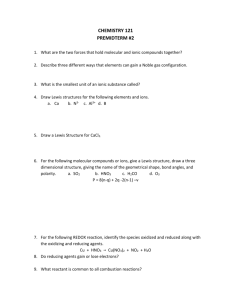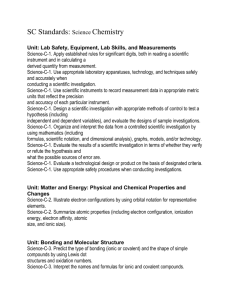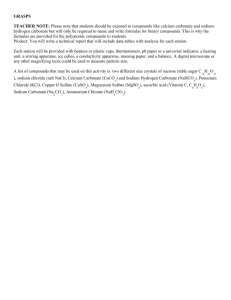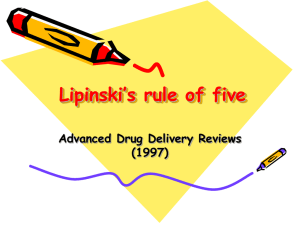Atomic structure - Rose
advertisement
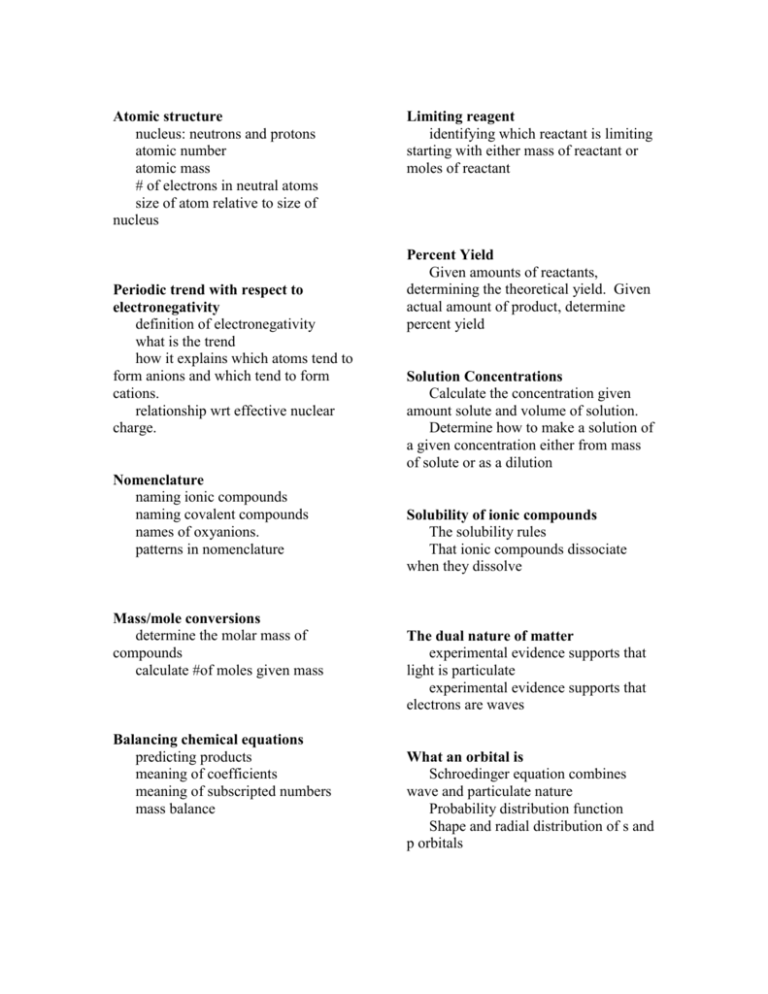
Atomic structure nucleus: neutrons and protons atomic number atomic mass # of electrons in neutral atoms size of atom relative to size of nucleus Periodic trend with respect to electronegativity definition of electronegativity what is the trend how it explains which atoms tend to form anions and which tend to form cations. relationship wrt effective nuclear charge. Nomenclature naming ionic compounds naming covalent compounds names of oxyanions. patterns in nomenclature Mass/mole conversions determine the molar mass of compounds calculate #of moles given mass Balancing chemical equations predicting products meaning of coefficients meaning of subscripted numbers mass balance Limiting reagent identifying which reactant is limiting starting with either mass of reactant or moles of reactant Percent Yield Given amounts of reactants, determining the theoretical yield. Given actual amount of product, determine percent yield Solution Concentrations Calculate the concentration given amount solute and volume of solution. Determine how to make a solution of a given concentration either from mass of solute or as a dilution Solubility of ionic compounds The solubility rules That ionic compounds dissociate when they dissolve The dual nature of matter experimental evidence supports that light is particulate experimental evidence supports that electrons are waves What an orbital is Schroedinger equation combines wave and particulate nature Probability distribution function Shape and radial distribution of s and p orbitals Electron Configuration Pauli exclusion principle Aufbau principle Order of filling Relationship to periodic table Dipole Moment Determine whether or not bonds are polar From the structure predicted by VSEPR, predict if the molecule will have a dipole moment. Lewis Dot Structures How to Which elements can break the octet rule, and why formal charge Intermolecular Forces Ion-ion. ion-dipole Dipole-dipole Dipole-induced dipole Induced dipole-induced dipole Justifying phase based on the possible types of intermolecular attractions Valence Shell Electron Pair Repulsion What shapes form Role of non-bonding electron pair Hybridization Orbitals combine to form new orbitals Which hybrids result in which geometries Relate to VSEPR-predicted shapes MO Theory Conserves energy & # of orbitals bonding versus anti-bonding versus (symmetry) Follows Aufbau Principle Band Theory To explain why metals conduct To define semiconductors and insulators Solutions Like dissolves like Solubility of gases Effect of temperature on solubility Colligative Properties Vapor pressure lowering Boiling point elevation Freezing point depression Solids three cubic unit cells closest packed explaining observations based on unit cell analyses. Gases Gas laws: Boyle’s, Charles, Avogadro’s Ideal Gas Law Dalton’s law of partial pressures Collision Theory The effect of Temperature on reaction rates. Arrhenius equation Activation Energy Kinetic Molecular Theory Four assumptions Average kinetic energy depends only on temperature Root mean square speed is inversely related to mass Nuclear Chemistry What motivates nuclear reactivity Kinetics of nuclear chemistry Kinetics That rate is the slope of concentration versus time That these slopes are related to the Stoichiometry of the balanced chemical equation Integrated Rate Laws Zeroth, First, and Second order rate laws. Half lives. nth order integrated rate law Method of Initial Rates How data is collected How data is analyzed Ratio of rates Units of k
